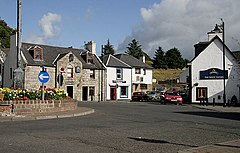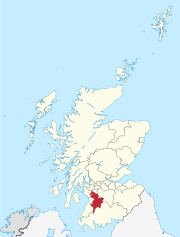
Ayrshire is a historic county and registration county, in south-west Scotland, located on the shores of the Firth of Clyde. The lieutenancy area of Ayrshire and Arran covers the entirety of the historic county as well as the island of Arran, formerly part of the historic county of Buteshire. Its principal towns include Ayr, Kilmarnock and Irvine and it borders the counties of Renfrewshire and Lanarkshire to the north-east, Dumfriesshire to the south-east, and Kirkcudbrightshire and Wigtownshire to the south. Like many other counties of Scotland, it currently has no administrative function, instead being sub-divided into the council areas of East Ayrshire, North Ayrshire and South Ayrshire. It has a population of approximately 366,800.
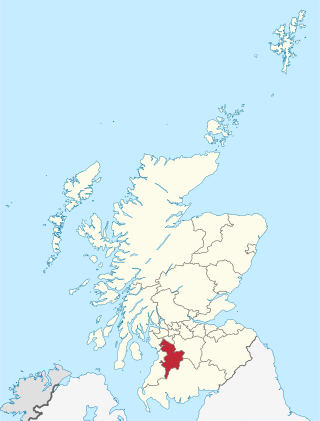
East Ayrshire is one of 32 unitary council areas of Scotland. It shares borders with Dumfries and Galloway, East Renfrewshire, North Ayrshire, South Ayrshire and South Lanarkshire. The headquarters of the council are located on London Road, Kilmarnock. With South Ayrshire and the mainland areas of North Ayrshire, it formed the former county of Ayrshire.
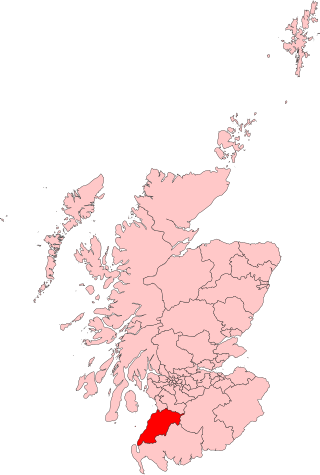
Ayr, Carrick and Cumnock is a county constituency represented in the House of Commons of the Parliament of the United Kingdom. It was created for the 2005 general election from parts of the old Ayr and Carrick, Cumnock and Doon Valley constituencies. It has been represented since 2019 by Allan Dorans of the Scottish National Party.

Patna is a village in East Ayrshire, Scotland, straddling the traditional districts of Carrick and Kyle.

The River Doon is a river in Ayrshire, Scotland. Its course is generally north-westerly, passing near to the town of Dalmellington, and through the villages of Patna, Dalrymple, and Alloway, birthplace of Robert Burns. The source of the Doon is Loch Doon, high in the Galloway Hills.

Carrick, Cumnock and Doon Valley is a county constituency of the Scottish Parliament at Holyrood, covering parts of the council areas of South Ayrshire and East Ayrshire. It elects one Member of the Scottish Parliament (MSP) by the plurality method of election. Also, it is one of nine constituencies in the South Scotland electoral region, which elects seven additional members, in addition to the nine constituency MSPs, to produce a form of proportional representation for the region as a whole.
The Ayr and Dalmellington Railway was a railway company in Scotland, which connected the growing ironworks community around Dalmellington with Ayr, in Ayrshire, Scotland. Its route was originally planned by the Ayrshire and Galloway Railway as part of a scheme to link Ayr with Castle Douglas, but lack of funds limited the construction to a very short section connecting the iron and coal pits of the Dalmellington Iron Company with its iron works, opening in 1849.

Barrmill is a small village in North Ayrshire, Scotland about 1+1⁄2 miles east of Beith on the road to Burnhouse and Lugton. Locally it is known as the Barr.

Bellsbank is a village half a mile away from the market town of Dalmellington in East Ayrshire, Scotland. It is the second-highest place in East Ayrshire; only Muirkirk is higher than this. Bellsbank is now classed as a separate town from Dalmellington.
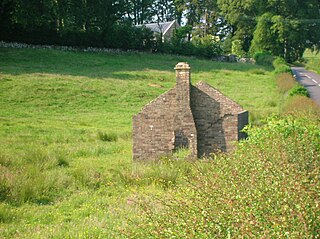
A curling house was used to store curling stones, brushes and other equipment used to maintain a curling pond and play the game of curling in Scotland and elsewhere.

The Carsphairn and Scaur Hills are the western and eastern hills respectively of a hill range in the Southern Uplands of Scotland. Ordnance Survey maps don't have a general name for the hill area as a whole. Also, Ordnance Survey use "Scar" rather than the local spelling of "Scaur" - the word is pronounced as "Scar" however. In their Landranger Series of maps, it requires four separate sheets to cover the area.
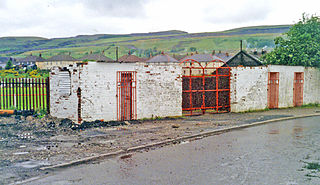
Dalmellington railway station served the town of Dalmellington, East Ayrshire, Scotland, from 1856 to 1964 on the Ayr and Dalmellington Railway.
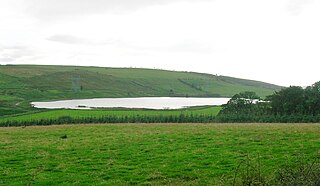
Kerse Loch, also recorded as Carse Loch (1841) is a small freshwater loch in the East Ayrshire Council Area, lying in a glacial Kettle Hole, Parish of Dalrymple, Scotland.
Doon Academy is a secondary school in Dalmellington that caters to the local surrounding areas Dalmellington, Patna, Rankinston and Bellsbank. The current head teacher is Kenneth Reilly who took over from John Mackenzie in 2014.
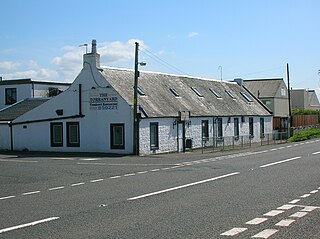
Torranyard is a small village or hamlet in North Ayrshire, Parish of Kilwinning, Scotland. It lies between the settlements of Auchentiber and Irvine on the A736 Lochlibo Road.
Donald Lees ReidBA (Hons) is a Scottish author. He specialises in local and social history and has written books on the history of the Garnock Valley and Doon Valley, including the towns of Beith, Barrmill, Dalmellington, Gateside, Kilbirnie, Patna, and Waterside. He has resided in Beith, North Ayrshire since 1986. A strong emphasis in the books is on the people and the social context of their lives.
Dalrymple is a village and parish in East Ayrshire, Scotland, lying in the Doon Valley on the north bank of the River Doon. The population is around 1,347.
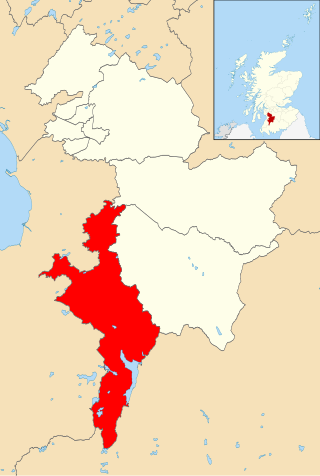
Doon Valley is one of the nine electoral wards of East Ayrshire Council. Created in 2007, the ward elects three councillors using the single transferable vote electoral system and covers an area with a population of 11,592 people.

The Loch Doon Aerial Gunnery School Railway was a standard gauge military freight carrying line that ran the 1.4 miles (2 km) between a junction with the Ayr and Dalmellington Railway near Dalmellington to a terminus at Dalfarson on the Craigengillan Estate, East Ayrshire. No passenger carriages are recorded.
